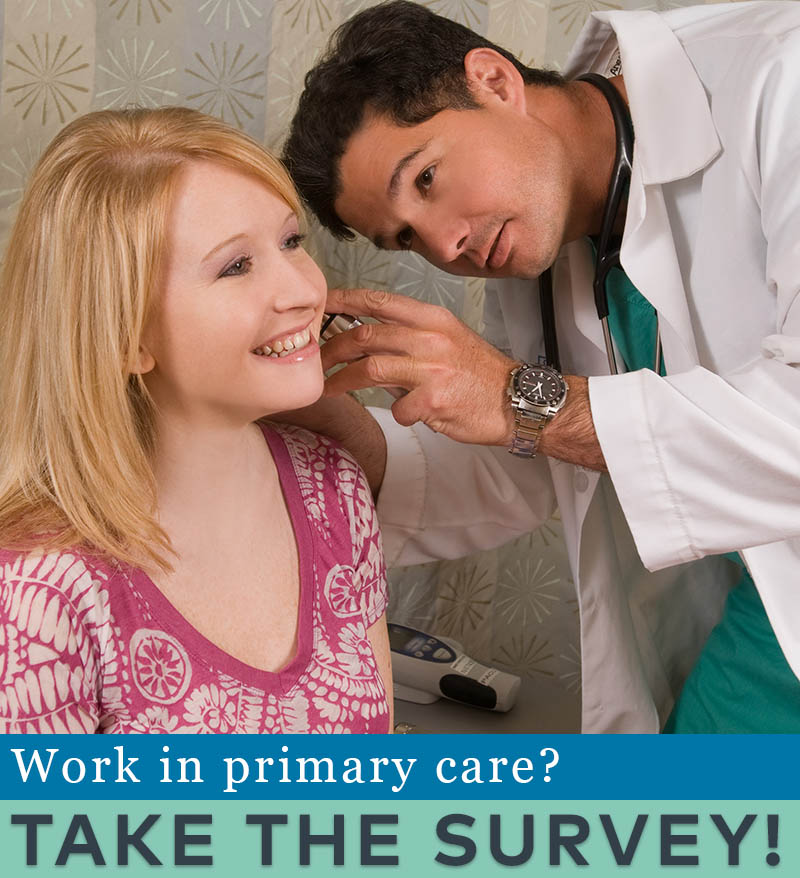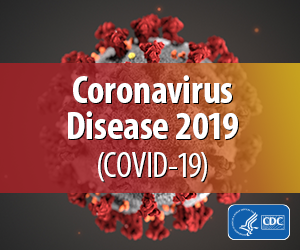You are looking at an archived version of our site. Please visit thepcc.org for a fresh, new experience!
You are here: Array » Primary Care & COV ...
Primary Care & COVID-19: Round 25 Survey
Check back regularly for the latest survey results and updates.
For data from the previous survey, see Round 24 Results.
The Primary Care Collaborative is partnering with the Larry A. Green Center to regularly survey primary care clinicians and patients to better understand the impact of COVID-19 in real time.
Who replied to the survey in round 25?
Over 1,000 primary care clinicians responded to the latest survey (round 25). Responses came from all 50 states, the District of Columbia, Guam and Puerto Rico. Nearly half (48%) of respondents came from five states: Texas, Oregon, Virginia, Indiana, and California. About three-quarters of responses came from primary care physicians (MDs and DOs); nurse practitioners represented 13% of responses, followed by PAs (3%), Phd and PharmD (each less than 1%), and other (6%). That majority (72%) specializes in family medicine, followed by internal medicine (12%), pediatrics (6%), geriatrics (3%) mental/behavioral health (1%), pharmacy (<1%), and other (5%). 45% of respondents are employed by a hospital or health system; 30% are an owner or partner in their practice; 15% are employees of an independent practice; and 13% are self-employed. A third practice at a designated PCMH, and a fifth work in a rural setting. Nearly 60% of respondents work at a practice with nine or fewer clinicians.
Round 25 of the clinician survey was fielded January 15-19, 2021. Total responses: 1,065.
Results at a glance
-
Primary care is already advancing vaccine efforts. Respondents report supporting the COVID-19 vaccine rollout in several ways:
-
referrals: 47% are referring patients to a known source when they call to ask for the vaccine
-
education: 42% have educational information in their practice to share with patients
-
outreach: 30% are proactively notifying all their patients about how to get the vaccine
-
- Still, nearly a third have “no idea” when or if their practice will get the vaccine. 32% of respondents say they have not been included in any state or regional planning and do not know if or when their practice will get the vaccine. Another quarter say they are waiting for delivery of the doses. Less than a fifth (19%) say they are currently administering the COVID-19 vaccine.
-
For some, the difference is being part of a health system: 44% report that their local health systems can get the vaccine, but small or independent practices cannot. A majority of respondents believe primary care should be partnering with public health (65%) and local health systems (62%) in COVID-19 vaccine delivery.
-
More primary care clinicians are receiving shots. The vast majority (89%) of surveyed clinicians say that have received at least one dose of a COVID-19 vaccine. Now only 6% of respondents say that they can’t get the vaccine for their practice's clinicians or staff. Yet vaccine hesitancy exists even among primary care: 13% report having clinicians in their office who are against use of a COVID-19 vaccine.
-
Telehealth is here to stay. The pandemic necessitated a quick (and often bumpy) transition to telehealth for many clinicians, but many say that process has given them confidence to use virtual technology for care. 70% of respondents say they have gained confidence in their use of telehealth during the pandemic, with 45% reporting that they are still using video-based care for at least a fifth of their patients. 60% report that increased use of telehealth “will now always be a part of my practice.”
-
Vaccines offer hope, but over half still say that now is worse than any other point in the pandemic. 55% of those surveyed say this surge is “much worse” than any previous point in the pandemic. A not-insignificant portion of clinicians (15%) personally know primary care practices that have closed, and 35% personally know clinicians who have quit or retired early because of the pandemic. Nearly a third (32%) continue to limit in-person visits, even for non-respiratory illnesses.
Learn more: Download the Round 25 Clinician Survey Executive Summary (includes select open-ended answers to survey questions)
| Attachment | Size |
|---|---|
| 832.35 KB |

Are you a physician, nurse practitioner, or PA working in primary care?
Help PCC and the Larry A. Green Center track how your practice is responding to the COVID-19 outbreak by completing the Green Center's occasional survey.
The regular surveys are no longer being conducted.
COVID-19 Updates
May 9, 2022 | Primary Care Collaborative
April 19, 2022 | Primary Care Collaborative
April 19, 2022 | Primary Care Collaborative
March 7, 2022 | STAT
February 27, 2022
- 1 of 39
- next ›

Recent News
August 16, 2024
August 12, 2024
July 16, 2024
May webinar highlights: “The Commercial Market: Alternative Payment Models for Primary Care” Nate Murray explains w… https://t.co/KX9Wi2w6oY —
2 years 4 months ago
@CMSinnovates’ primary care strategy is rooted in a 2021 @theNASEM’s report which called #primarycare “foundational… https://t.co/glbPxvCysg —
2 years 4 months ago
@CMSinnovates has a new #primarycare strategy, envisioning “ACO-based primary care model tests that may focus on pr… https://t.co/aJGF1z411l —
2 years 4 months ago
- Page 1
- ››
Secondary menu
Copyright © 2024 Primary Care Collaborative




